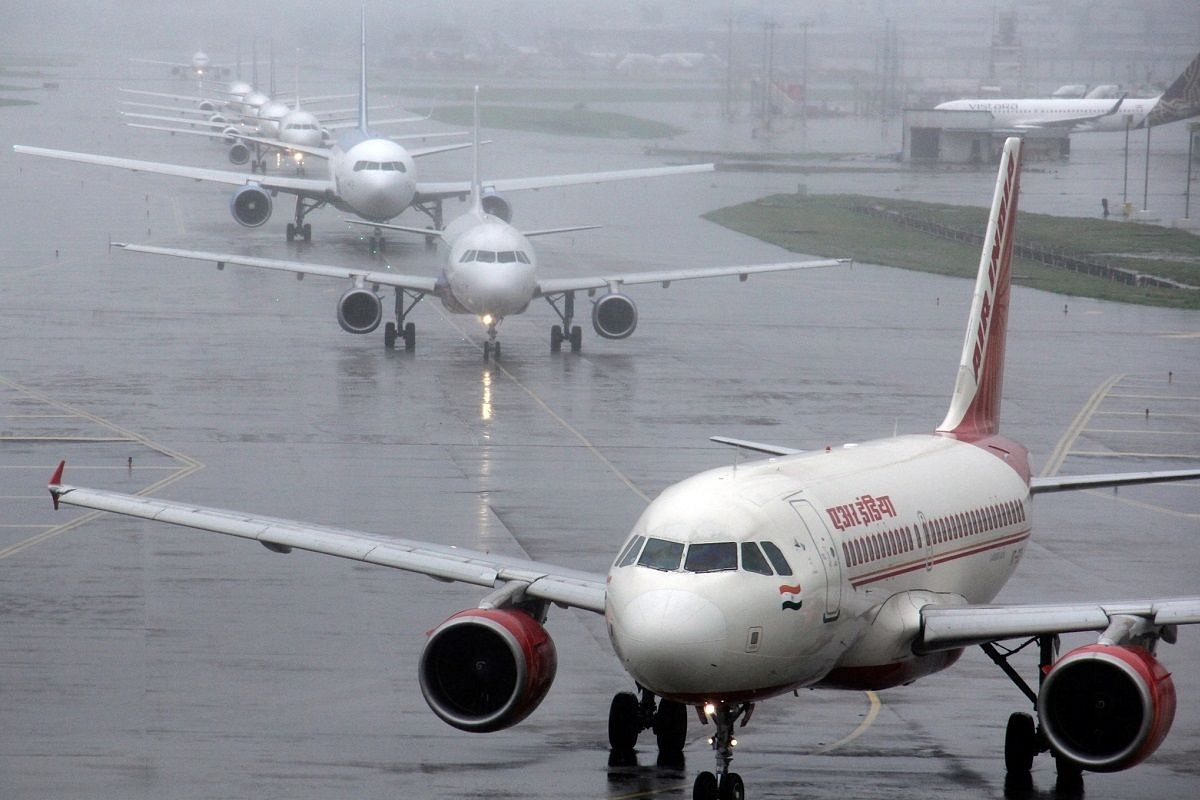Infrastructure
Mumbai Airport: Steps To Handle Air Space Congestion Notified By Civil Aviation Ministry

Planes queue up on the taxiway for take-off at Chhatrapati Shivaji International Airport in Mumbai, Maharashtra. (via Getty Images)
With uplifting of travel restrictions post the pandemic, airports have witnessed a considerable increase in air traffic and air space congestion.
Mumbai Airport, being one of the busiest airports in the country, suffers from congestion and excess capacity on its runways, which inadvertently leads to air space congestion, whereby flights are forced to hover over the city for a long duration of around 40-60 minutes.
Considering that an aircraft on an average consumes 2,000 kg of fuel per hour, such long duration circling time, causes significant wastage of fuel for the aircrafts — 1.7 kilolitres of jet fuel, approximately costing around Rs 1.8 lakh for a 40 minutes circling time in air, to around 2.5 kilolitres of jet fuel costing around Rs 2.6 lakh for a 60 minute circling time.
It is to be understood that such increase in fuel cost would eventually be borne by the consumers.
This also has a cascading effect on the efficiency of airports operations leading to a longer wait time, inordinate delays, affecting both passengers and airlines adversely.
In order to remedy such air space congestion, an analysis was conducted by Airport Authority of India, which found that air traffic permitted per hour during the six hours of High Intensity Runway Operations (HIRO) from 8 am to 11 am and 5 pm to 8 pm was almost equivalent to air traffic permitted per hour, during the remaining 18 hours of the day.
In addition to the above slots, general aviation and military aircraft operations were also allowed without any restrictions.
Besides, owing to presence of transverse runways, operation of non-scheduled flights further increases air traffic congestion during peak hours.
While Mumbai Airport is running at its full capacity, it was found that the persistent congestion was caused due to, (i) excessive slot distribution with limited time margins on behalf of the airport operator, (ii) non-adherence of the slots on behalf of the airlines and (iii) non-scheduled operations during peak hours.
The airport operator being the slot provider, as well as the manager of slots to the airlines, should have proactively taken steps to streamline and regulate the air traffic movements, to resolve this problem.
However since, no such action was initiated by them, Ministry of Civil Aviation has had to step in.
Airport Authority of India, being the Air Navigation Service Provider, issued directives to the airport operator in the form of Notice to Air Men (NOTAMs) on 2 January 2024, which restricted the air traffic movements during HIRO (from 8 am-11 am, 5 pm-8 pm, 9.15 pm-11.15 pm) period from 46 to 44 per hour and in non-HIRO period from 44 to 42 per hour.
Further, general aviation aircraft operations during HIRO period have also been restricted. It is expected that MIAL should take immediate action to ensure that all airlines are on board with the prescribed restrictions.
This action has been taken in larger public interest from perspective of airspace safety, efficiency of operations and passenger satisfaction, the Ministry explained.
Support Swarajya's 50 Ground Reports Project & Sponsor A Story
Every general election Swarajya does a 50 ground reports project.
Aimed only at serious readers and those who appreciate the nuances of political undercurrents, the project provides a sense of India's electoral landscape. As you know, these reports are produced after considerable investment of travel, time and effort on the ground.
This time too we've kicked off the project in style and have covered over 30 constituencies already. If you're someone who appreciates such work and have enjoyed our coverage please consider sponsoring a ground report for just Rs 2999 to Rs 19,999 - it goes a long way in helping us produce more quality reportage.
You can also back this project by becoming a subscriber for as little as Rs 999 - so do click on this links and choose a plan that suits you and back us.
Click below to contribute.
Latest